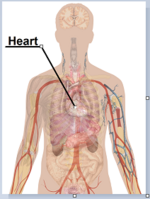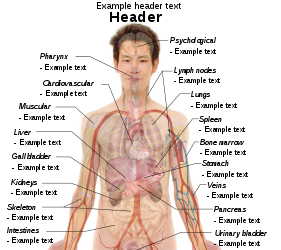File:Health effects of cheese.svg

Original file (SVG file, nominally 1,500 × 1,085 pixels, file size: 850 KB)
Captions
Captions
Contents
Summary[edit]
| DescriptionHealth effects of cheese.svg |
English: Health effects of cheese consumption (See Wikipedia:Cheese#Health_and_nutrition).
Model: Mikael Häggström. To discuss image, please see Template talk:Häggström diagrams ReferencesTooth decay prevention:
Risk of triggering lactose intolerance
Risk of bacterial infection
DISPUTED:
Increased risk of cardiovascular disease
|
| Date | |
| Source | All used images are in public domain. |
| Author | Mikael Häggström |
| Other versions |
 |
Licensing[edit]
| Public domainPublic domainfalsefalse |
| I, the copyright holder of this work, release this work into the public domain. This applies worldwide. In some countries this may not be legally possible; if so: I grant anyone the right to use this work for any purpose, without any conditions, unless such conditions are required by law. |
Human body diagrams[edit]Main article at: Human body diagrams Template location:Template:Human body diagrams How to derive an image[edit]Derive directly from raster image with organs[edit]The raster (.png format) images below have most commonly used organs already included, and text and lines can be added in almost any graphics editor. This is the easiest method, but does not leave any room for customizing what organs are shown. Adding text and lines: Derive "from scratch"[edit]By this method, body diagrams can be derived by pasting organs into one of the "plain" body images shown below. This method requires a graphics editor that can handle transparent images, in order to avoid white squares around the organs when pasting onto the body image. Pictures of organs are found on the project's main page. These were originally adapted to fit the male shadow/silhouette.
Organs:
Derive by vector template[edit]The Vector templates below can be used to derive images with, for example, Inkscape. This is the method with the greatest potential. See Human body diagrams/Inkscape tutorial for a basic description in how to do this.
Examples of derived works[edit]
Licensing[edit]
|
File history
Click on a date/time to view the file as it appeared at that time.
| Date/Time | Thumbnail | Dimensions | User | Comment | |
|---|---|---|---|---|---|
| current | 11:03, 28 May 2009 |  | 1,500 × 1,085 (850 KB) | Mikael Häggström (talk | contribs) | {{Information |Description={{en|1=g}} |Source=Own work by uploader |Author=Mikael Häggström |Date=g |Permission= |other_versions= }} <!--{{ImageUpload|full}}--> |
You cannot overwrite this file.
File usage on Commons
The following page uses this file:





























